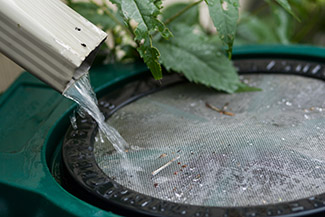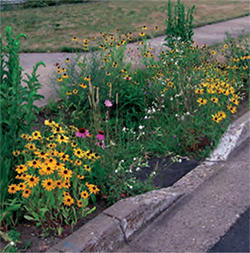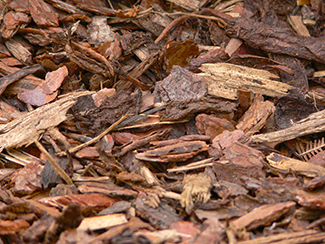


Have you ever wondered what happens to rain when it goes down a storm drain? It’s carried by the storm sewer and discharged into nearby waterways. This water, called stormwater runoff, is not treated.
It carries everything it has picked up from streets, lawns, rooftops, and other surfaces, including trash, chemicals, bacteria, and other pollutants. However, runoff isn’t just caused by rain; human activities also create it. For example, we can create runoff simply by hosing off our driveways.
In urban and suburban areas, much of the land is covered by buildings and pavement, which do not allow water to soak into the ground.
Buildings and pavement make runoff worse by increasing both the speed and the amount of water going down the storm drains. In undeveloped areas, rain fall is filtered and absorbed by soil and plants, so runoff is cleaner and less of a problem.
WHAT CAN TEXANS DO?
Keep Rain Where It’s Falling


You can reduce runoff problems by collecting rain at home and storing it in rain barrels or a cistern to use later. Rainwater harvesting has numerous benefits.
Not only will you reduce runoff and improve water quality, you’ll also conserve a precious resource and save money on your utility bill.
Yet another benefit, rainwater is better for plants than treated water. Learn more about rainwater harvesting with our free guide.


Another option for capturing runoff is to build a rain garden in your yard or community. Rain gardens are shallow, plant-filled basins that collect water from a roof, driveway, or street.
They hold water temporarily and allow it to soak into the ground while filtering out pollutants. These landscape features also provide food and shelter for butterflies, song birds, and other wildlife, and can make a lovely point of interest in your yard or neighborhood.


You can also reduce runoff by decreasing the impervious surfaces on your property and increasing the permeable ones.
Water cannot seep into impervious surfaces, such as streets, roofs, and driveways. Permeable areas, however, allow water to soak into the ground rather than running off.
Here are a few tips to make your yard more water friendly.
You can’t stop all runoff, and some is natural. However, by reducing sources of water pollutants around your home, any runoff will be cleaner.
This article was originally published by Take Care of Texas, and is a department of Texas Commission on Environmental Quality.
The San Marcos City Council received a presentation on the Sidewalk Maintenance and Gap Infill…
The San Marcos River Rollers have skated through obstacles after taking a two-year break during…
San Marcos Corridor News has been reporting on the incredible communities in the Hays County…
Visitors won't be able to swim in the crystal clear waters of the Jacobs Well Natural…
Looking to adopt or foster animals from the local shelter? Here are the San Marcos…
The Lone Star State leads the nation in labor-related accidents and especially workplace deaths and…
This website uses cookies.